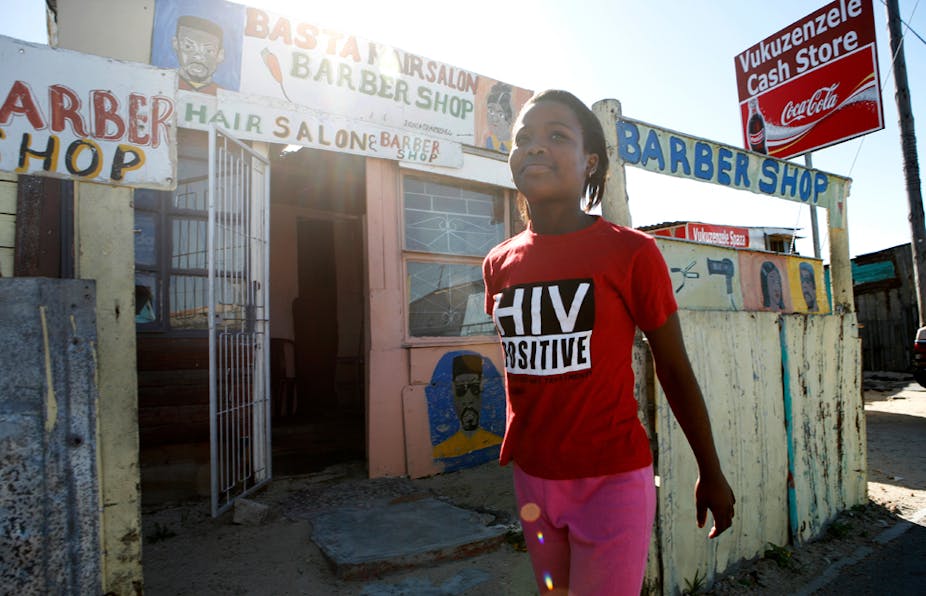Documentaries have the power to tell the stories with the most impact. They describe the “real” world, present “real” problems. Despite this, it is drama and Hollywood film that reaches the masses. As Susan Sarandon tells us in the documentary The Celluloid Closet (1995), “Hollywood is the keeper of the dreams”.
Recently the Hollywood dream has again tackled AIDS and issues in the pharmaceutical industry. Dallas Buyers Club (2014) won many Academy Awards, echoing the effect of Philadelphia 20 years ago.
Although Philadelphia made some impact, with Tom Hanks winning an Academy Award, filmmakers haven’t tended to want to engage with the idea of an AIDS hero. The notable exception might be the biopic Pedro (2009), which told the inspirational story of openly gay Cuban AIDS activist Pedro Zamora. But this film received little attention, and it was the documentary version of Pedro’s life in the reality TV series The Real World (1994) that seemed to offer the lasting legacy.
The recent success of Dallas Buyers Club hopefully signals a change in giving these issues airtime. But despite this, it is in independent documentary film that we see real exploration of the matter. Films such as Common Threads (1989), Absolutely Positive (1991), Silverlake Life (1993) and the more recent How to Survive a Plague (2012), have looked at the issue from the perspective of gay men, the effect of AIDS on their lives, and the strategies they embarked upon in order to obtain better drugs.

Then there is a separate documentary strand, of films such as Shouting Silent (2002), Dying For Drugs (2005) and Orphans of Nkandla (2005). These films mostly focus on children in the third world, and the denial of wide scale treatment influenced by the global impact of the American pharmaceutical industry maintaining high drug costs, and consequently assuring profits for their shareholders. This is the focus of Dylan Mohan Gray’s new documentary, Fire in the Blood.
This offers an up-to-date discussion of the effect that AIDS still has on the third world, revealing a continuing concern regarding the global costs of AIDS drugs. It concentrates on the story of Yusef Hamied, head of the Indian pharmaceutical company Cipla. The film reveals his impact on the establishment of the availability of lower cost generic AIDS drugs in the developing world.
Despite AIDS drug costs being reduced in 2001 from US$15,000 a year to US$350 dollars a year for the Triple ARV (antiretroviral) cocktail, the film reveals that more recently, the global pharmaceutical industry redefined drug patent laws through the World Trade Organisation. This in effect potentially limits any future availability of new AIDS drugs at subsidised prices.

So the film is about much more than the struggle for access to antiretroviral (ARV) medication. I spoke to Dylan Mohan Gray, the director. He said:
This serves as the starting point for a much more expansive conversation about the entire system of developing and commercialising drugs, and the overall problem of access to essential medicine in the face of that system. It is monopoly pricing which causes these cataclysms, and also incentivises companies to focus their resources on developing and selling products which only occasionally address serious public health priorities.
Hopefully, this contemporary focus should attract mainstream viewers.

A different picture emerges in the documentary How to Survive a Plague. This film covers ACT UP, a revolutionary group mostly headed by gay men in the 80s and 90s. This revolutionary group fought for the availability of AIDS drugs to the masses. How to Survive a Plague is told through archival footage and contemporary content.
In some ways a Hollywood narrative suspense formula is used, foregrounding the story of a lost generation, revealing skills of survival, resonating with the ideal of American pioneer culture, in fighting back, and winning terrain. But How to Survive a Plague has not made much impact in mainstream culture, even though it was nominated for an Academy Award.
It’s not that documentary can’t reach the masses. The problem lies in how it represents those afflicted. Fire in the Blood confronts the issue in terms of the developing world, whereas How to Survive a Plague mostly in terms of gay men. And head-on conceptions of marginalised groups of people can’t flourish in Hollywood dreams.
Films such as Dallas Buyers Club will reach out, and tell part of the story, though presenting a “biased” entertaining dream. But it is documentary films like How to Survive a Plague and Fire in The Blood that reveal the nightmare. They more effectively connect with consciousness, and our desire for coherence, and better understanding. This is why they are so important, and must be seen.
Fire in the Blood is available on DVD on 24 March 2014, and How to Survive a Plague on 31 March 2014.

